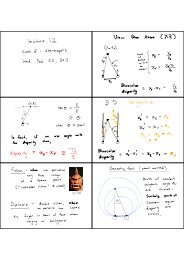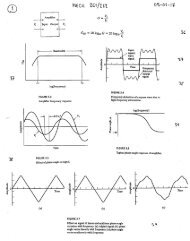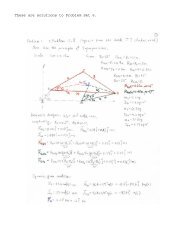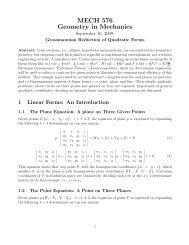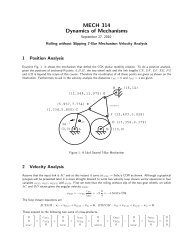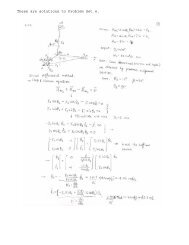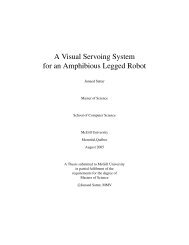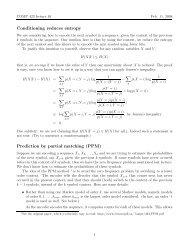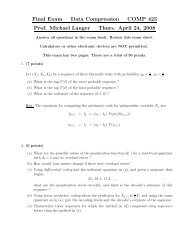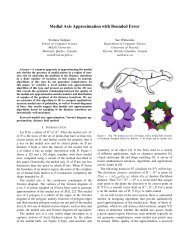Medial Spheres for Shape Representation - CIM - McGill University
Medial Spheres for Shape Representation - CIM - McGill University
Medial Spheres for Shape Representation - CIM - McGill University
You also want an ePaper? Increase the reach of your titles
YUMPU automatically turns print PDFs into web optimized ePapers that Google loves.
The number of simplices of DC(B) is O(|B| 2 ) and is much smaller <strong>for</strong> typical ball distri-<br />
butions, such as ones that we will consider in this thesis [47]. Use of this simple <strong>for</strong>mula<br />
makes the computation of the volume of a union of balls efficient.<br />
1.3 Thesis Overview<br />
In this section, the main objectives of the thesis and the order in which they will be<br />
addressed are described. We will then list the novel contributions of this thesis. We will<br />
also specify which contributions appear in published or submitted work.<br />
1.3.1 Objective and Outline<br />
This thesis introduces a new shape representation: the set of well-spaced medial<br />
spheres, that is, a union of medial spheres the coordinates of whose centres, when rounded<br />
to the nearest integer, are unique integer triples. This distribution of medial spheres is<br />
well-spaced because there is at most one sphere centre per cubic region of space. The<br />
goal of this thesis is to investigate the strengths of this shape representation in terms of the<br />
three desiderata of shape representations mentioned in Section 1.1: 1) ease of generation,<br />
2) ability to capture meaningful shape in<strong>for</strong>mation, and 3) efficiency of geometric opera-<br />
tions. The thesis consists of three parts, each of which addresses the desiderata above, in<br />
that order.<br />
Part I introduces algorithms <strong>for</strong> converting from an explicit boundary representation<br />
of a solid to a set of well-spaced medial spheres by approximating the medial surface of<br />
a solid. When the boundary of the solid is a polygonal mesh, practical algorithms <strong>for</strong> the<br />
efficient computation of the union of medial spheres shape representation are developed.<br />
Correctness and completeness issues of the proposed algorithms are discussed in each of<br />
the three chapters of Part I.<br />
18



